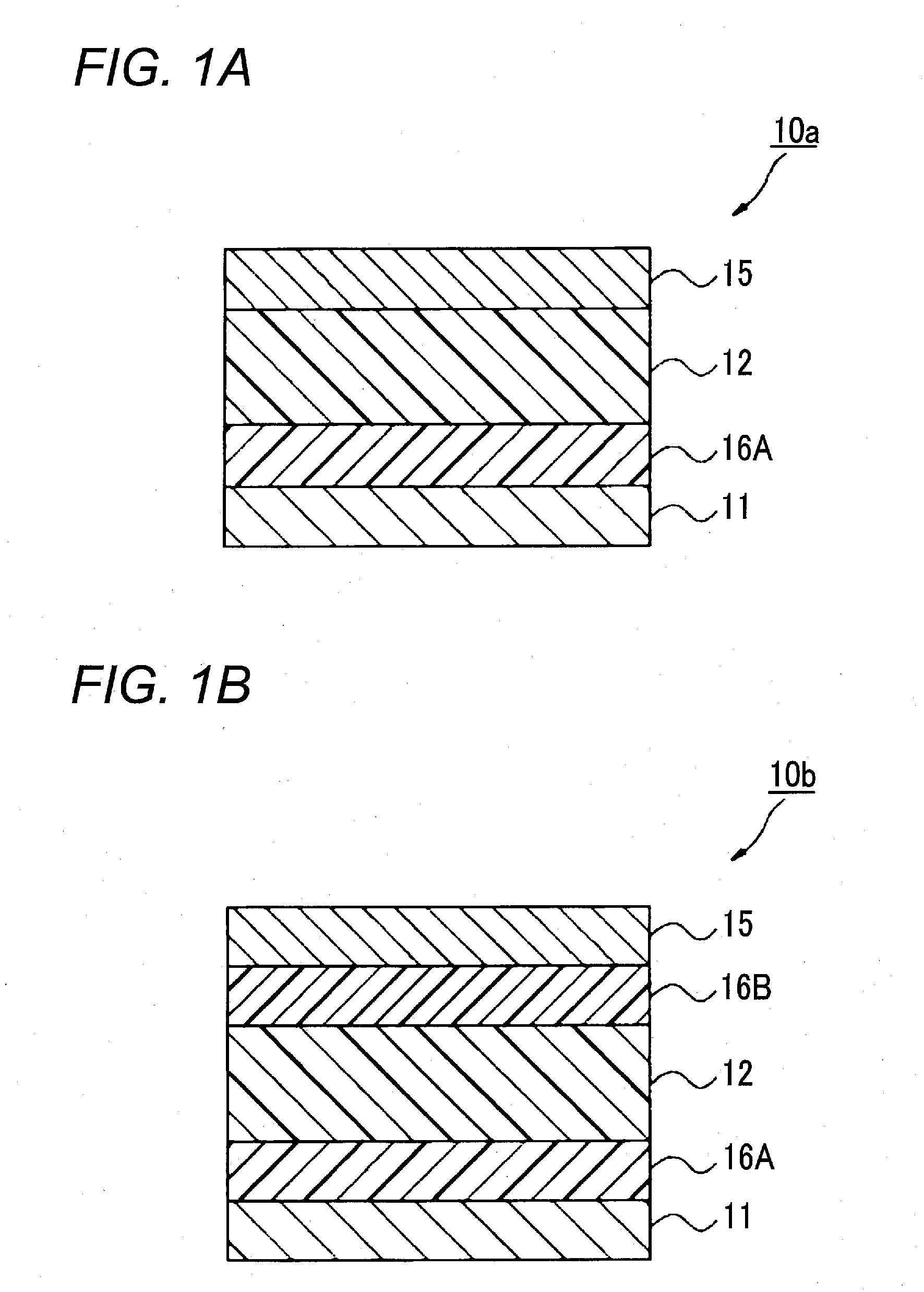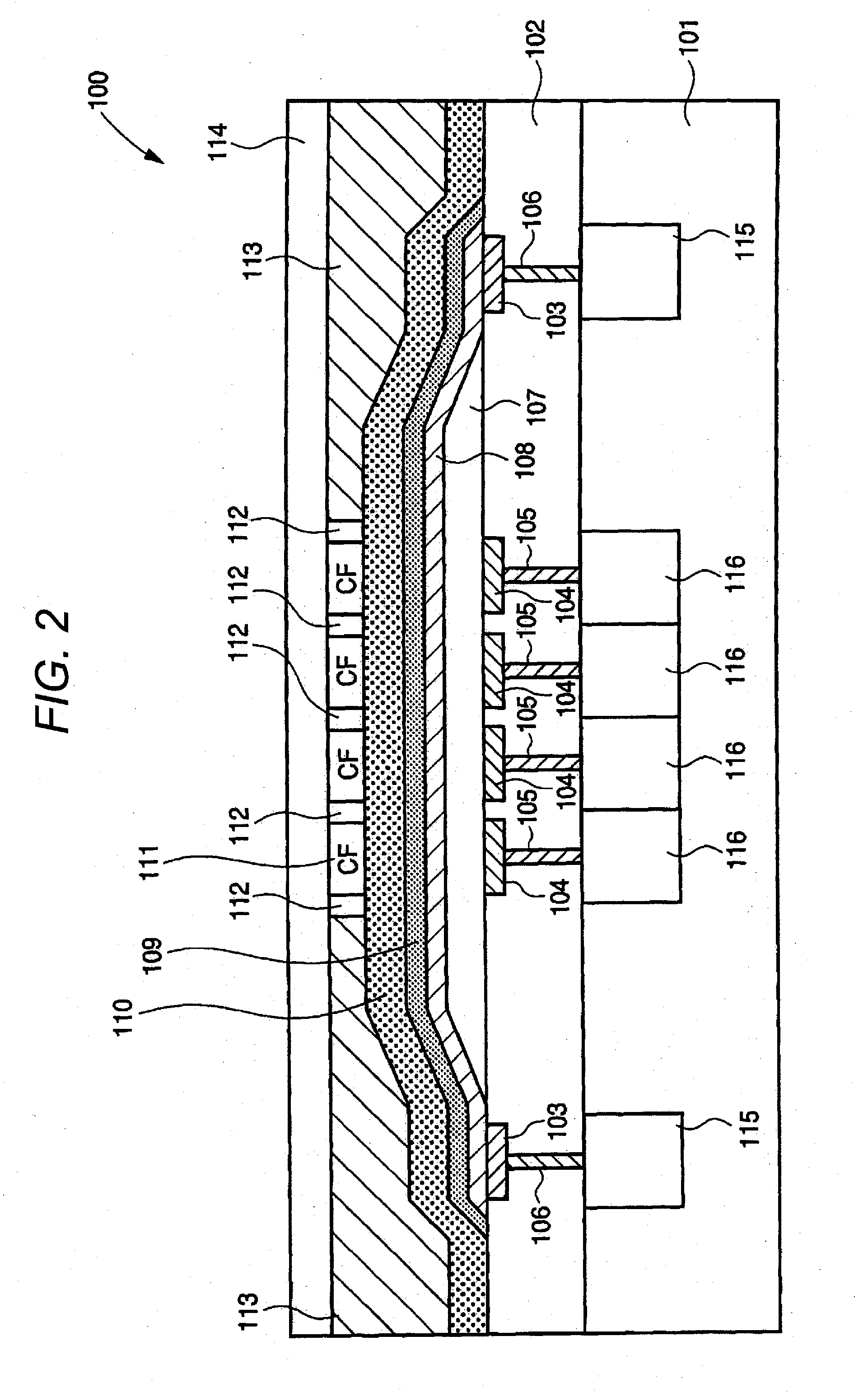Photoelectric conversion material, film containing the material, photoelectric conversion device, production method thereof, photosensor, imaging device and their use methods
a technology of photoelectric conversion and film containing material, which is applied in the direction of methine/polymethine dye, optical radiation measurement, instruments, etc., can solve the problems of reducing the aperture ratio and the light collection efficiency, and the failure of light to transmit through the color filter is not utilized, etc., to achieve high heat resistance, high sensitivity, and high speed responsivity
- Summary
- Abstract
- Description
- Claims
- Application Information
AI Technical Summary
Benefits of technology
Problems solved by technology
Method used
Image
Examples
example 1
[0204]
(Synthesis of Compound 1a)
[0205]To 10 ml of dehydrated xylene, 4.0 g of N-phenyl-2-naphthylamine (produced by Tokyo Chemical Industry Co., Ltd.), 4.0 g of methyl 6-bromo-2-naphthoate (produced by Wako Pure Chemical Industries, Ltd.), 170 mg of palladium acetate, 590 mg of triphenylphosphine and 9.8 g of cesium carbonate were added, followed by refluxing for 3 hours. The reaction mixture was suction-filtered and after distilling off the solvent by an evaporator, the residue was purified on a silica gel column (developing solvent: toluene). The solvent was distilled off to obtain 6.2 g of Compound (1a).
(Synthesis of Compound 1b)
[0206]To 30 ml of dehydrated toluene, 23.6 ml of SMEAH (a toluene solution (about 70%) of sodium hydrogenated bis(2-methoxyethoxy)aluminum (produced by Wako Pure Chemical Industries, Ltd.)) was added, and after adjusting the inner temperature to 0° C. in an ice bath, a solution obtained by dissolving 9.9 ml of 1-methylpiperazine in 17 ml of dehydrated tol...
example 2
Synthesis of Compound (2)
[0215]Compound (2b) and Compound (2) were synthesized in the same manner as in Example 1 except for changing N-phenyl-2-naphthylamine to 2,2′-dinaphthylamine (produced by Tokyo Chemical Industry Co., Ltd.).
[0216]1H NMR (CDCl3) δ: 7.39 (4H, dd), 7.43-7.47 (4H, m), 7.58-7.66 (5H, m), 7.80-7.89 (6H, m), 8.24 (1H, s), 10.10 (1H, s).
[0217]1H NMR (CDCl3) δ: 7.39-7.49 (8H, m), 7.60-7.74 (7H, m), 7.84 (4H, d), 7.90 (1H, d), 8.12 (3H, m), 8.53 (2H, d), 8.60 (1H, d), 9.04 (1H, s).
[0218]Molecular weight: 601.69
[0219]The melting point of Compound (2) was measured in the same manner as in Example 1 and found to be 309° C.
[0220]The absorption spectrum (in a chloroform solution) of Compound (2) was measured in the same manner as in Example 1, as a result, the peak wavelength was 548 nm and the molar extinction coefficient at this wavelength was 54,000 M−1 cm−1.
[0221]A solid-state imaging device including a photoelectric conversion device was fabricated in the same manner a...
example 3
Synthesis of Compound (3)
[0222]Compound (3) was synthesized in the same manner as in Example 1 except for changing benzoindandione to indandione.
[0223]1H NMR (CDCl3) δ: 7.18 (1H, t), 7.23 (1H, d), 7.32-7.49 (7H, d), 7.57-7.68 (4H, m), 7.79-7.88 (5H, m), 8.02 (3H, m), 8.53 (1H, d), 8.92 (1H, s).
[0224]Molecular weight: 501.57
[0225]The melting point of Compound (3) was measured in the same manner as in Example 1 and found to be 253° C.
[0226]The absorption spectrum (in a chloroform solution) of Compound (3) was measured in the same manner as in Example 1, as a result, the peak wavelength was 514 nm and the molar extinction coefficient at this wavelength was 40,000 M−1 cm−1.
[0227]A solid-state imaging device including a photoelectric conversion device was fabricated in the same manner as in Example 1 except for changing Compound (1) in the photoelectric conversion layer to Compound (3).
PUM
| Property | Measurement | Unit |
|---|---|---|
| distance | aaaaa | aaaaa |
| distance | aaaaa | aaaaa |
| distance | aaaaa | aaaaa |
Abstract
Description
Claims
Application Information
 Login to view more
Login to view more - R&D Engineer
- R&D Manager
- IP Professional
- Industry Leading Data Capabilities
- Powerful AI technology
- Patent DNA Extraction
Browse by: Latest US Patents, China's latest patents, Technical Efficacy Thesaurus, Application Domain, Technology Topic.
© 2024 PatSnap. All rights reserved.Legal|Privacy policy|Modern Slavery Act Transparency Statement|Sitemap



